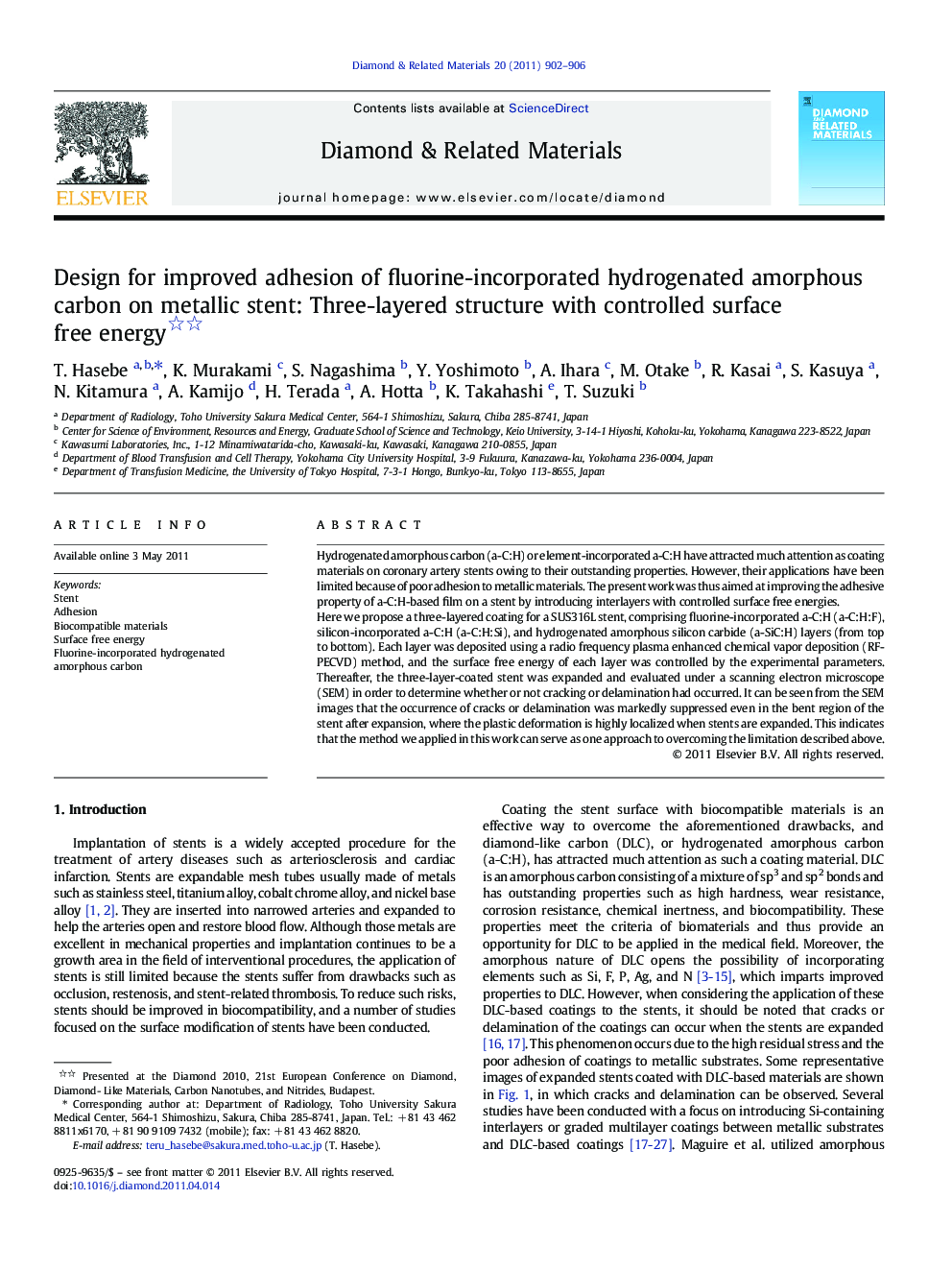| Article ID | Journal | Published Year | Pages | File Type |
|---|---|---|---|---|
| 702570 | Diamond and Related Materials | 2011 | 5 Pages |
Hydrogenated amorphous carbon (a-C:H) or element-incorporated a-C:H have attracted much attention as coating materials on coronary artery stents owing to their outstanding properties. However, their applications have been limited because of poor adhesion to metallic materials. The present work was thus aimed at improving the adhesive property of a-C:H-based film on a stent by introducing interlayers with controlled surface free energies.Here we propose a three-layered coating for a SUS316L stent, comprising fluorine-incorporated a-C:H (a-C:H:F), silicon-incorporated a-C:H (a-C:H:Si), and hydrogenated amorphous silicon carbide (a-SiC:H) layers (from top to bottom). Each layer was deposited using a radio frequency plasma enhanced chemical vapor deposition (RF-PECVD) method, and the surface free energy of each layer was controlled by the experimental parameters. Thereafter, the three-layer-coated stent was expanded and evaluated under a scanning electron microscope (SEM) in order to determine whether or not cracking or delamination had occurred. It can be seen from the SEM images that the occurrence of cracks or delamination was markedly suppressed even in the bent region of the stent after expansion, where the plastic deformation is highly localized when stents are expanded. This indicates that the method we applied in this work can serve as one approach to overcoming the limitation described above.
Research highlights► We have developed a a-C:H:F/a-C:H:Si/a-SiC:H-coated SUS316L stent. ► We particularly focused on the control of the surface free energy of a-C:H:Si. ► We investigated whether cracks or delamination of the coating had occurred. ► Cracks and delamination were markedly reduced even after the stent was expanded.
